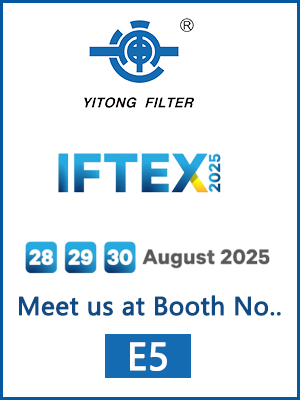Dec. 19, 2024
Sintered filter elements are a crucial part of many industrial filtration processes. Whether you're dealing with liquids or gases, these durable and efficient filters can provide superior filtration performance in demanding conditions. In this comprehensive guide, we will cover everything you need to know about sintered filter elements, including their design, applications, benefits, and maintenance tips. By the end, you'll understand why sintered filters are a top choice for industries worldwide.
Table of Contents
1. What Are Sintered Filter Elements?
2. How Are Sintered Filter Elements Made?
3. Types of Sintered Filter Elements
4. Key Applications of Sintered Filter Elements
5. Benefits of Using Sintered Filter Elements
6. Comparing Sintered Filters with Other Filter Types
7. How to Choose the Right Sintered Filter
8. Maintenance and Cleaning of Sintered Filter Elements
9. Common Challenges and Troubleshooting
10. Conclusion
Sintered filter elements are specialized filters made by compressing and heating metal powders to create a porous structure. This process, known as sintering, fuses the particles together without melting them completely. The resulting material is strong, durable, and highly effective for filtering out contaminants from gases and liquids.
Sintered filters can be made from various metals, including stainless steel, bronze, titanium, and nickel. The porous structure allows fluids to pass through while trapping unwanted particles, making them ideal for applications that require precision filtration.
The production of sintered filter elements involves several key steps:
1. Metal Powder Selection: Different metals are used depending on the intended application. Stainless steel is a popular choice due to its corrosion resistance and strength.
2. Powder Preparation: The metal powder is carefully measured and prepared to ensure consistent particle size and quality.
3. Compacting: The powder is placed in a mold and compacted under high pressure to form the desired shape.
4. Sintering: The compacted powder is heated in a controlled atmosphere at a temperature below the melting point of the metal. This fuses the particles together, creating a strong, porous structure.
5. Shaping and Finishing: The sintered element may be further shaped, machined, or finished to meet specific requirements.
This process results in a filter with uniform pores, excellent mechanical strength, and long-lasting durability.
Sintered filter elements come in a variety of shapes and materials to meet diverse industrial needs. Some common types include:
- Sintered Metal Filter Discs: Flat, circular filters used for precision filtration.
- Sintered Metal Cylinders: Hollow cylinders used in many liquid and gas filtration applications.
- Sintered Mesh Filters: Made by sintering multiple layers of metal mesh for enhanced strength and filtration efficiency.
- Sintered Powder Filters: Filters made from metal powders, offering high filtration accuracy and strength.
- Pleated Sintered Filters: Pleated designs provide a larger surface area, improving flow rate and filtration capacity.

Each type of sintered filter has unique properties suited to different applications, from high-pressure systems to chemical processing.
Sintered filter elements are used across various industries due to their robustness and versatility. Some of the most common applications include:
4.1. Chemical Processing
In chemical plants, sintered filters help remove contaminants from liquids and gases, ensuring product purity and protecting sensitive equipment.
4.2. Oil and Gas Industry
Sintered filters are used to remove particulates and moisture from fuels, lubricants, and natural gas. Their durability makes them ideal for harsh environments.
4.3. Food and Beverage Industry
These filters are used to ensure the purity of food-grade liquids and gases, such as filtering cooking oil, wine, and carbon dioxide.
4.4. Pharmaceutical Industry
Sintered filters play a role in producing sterile products by filtering contaminants from liquids and air used in pharmaceutical manufacturing.
4.5. Water Treatment
In water filtration systems, sintered filters remove sediments, contaminants, and impurities from drinking water and industrial wastewater.
4.6. Automotive and Aerospace
Sintered filter elements are used in fuel systems, hydraulic systems, and air filtration applications to ensure reliable performance.
Sintered filter elements offer numerous advantages over other types of filters. Here are some key benefits:
5.1. High Durability
Sintered filters are made from strong metals like stainless steel, making them resistant to wear, pressure, and extreme temperatures.
5.2. Consistent Filtration Efficiency
The uniform pore structure ensures consistent filtration performance, removing particles of a specified size reliably.
5.3. Chemical and Corrosion Resistance
Metals like stainless steel and titanium provide excellent resistance to chemicals and corrosion, making them suitable for harsh environments.
5.4. Reusability and Long Service Life
Sintered filters can be cleaned and reused multiple times, reducing the need for frequent replacements.
5.5. High Pressure and Temperature Tolerance
These filters can withstand high pressures and temperatures, making them suitable for demanding applications.
When selecting a filter, it's important to understand how sintered filters compare to other types, such as pleated filters, ceramic filters, and mesh filters.
6.1. Sintered vs. Pleated Filters
- Sintered Filters: Offer better durability and can withstand higher pressures.
- Pleated Filters: Have a larger surface area for higher flow rates but may not be as durable.
6.2. Sintered vs. Ceramic Filters
- Sintered Filters: More durable and resistant to impact.
- Ceramic Filters: Effective for certain applications but prone to cracking.
6.3. Sintered vs. Mesh Filters
- Sintered Filters: Provide finer filtration and better mechanical strength.
- Mesh Filters: Suitable for coarse filtration and lower-pressure applications.
When selecting a sintered filter element, consider the following factors:
- Material: Choose a material that is compatible with your application (e.g., stainless steel for corrosion resistance).
- Pore Size: Determine the filtration accuracy required (e.g., 5 microns, 10 microns).
- Operating Pressure and Temperature: Ensure the filter can withstand your system's conditions.
- Shape and Size: Select a filter that fits your equipment and application needs.
Proper maintenance is key to extending the life of sintered filters. Here are some cleaning methods:
- Backflushing: Reversing the flow to remove trapped particles.
- Ultrasonic Cleaning: Using ultrasonic waves to dislodge contaminants.
- Chemical Cleaning: Using solvents to dissolve stubborn particles.
Regular maintenance will keep your filters performing efficiently.
Some challenges with sintered filters include clogging and pressure drop. Regular cleaning and monitoring can address these issues. If problems persist, consider adjusting the pore size or cleaning frequency.
Sintered filter elements offer superior durability, efficiency, and versatility for industrial filtration. By understanding their benefits, applications, and maintenance needs, you can optimize your filtration processes and ensure long-term performance.
If you're looking for reliable sintered filters, consider partnering with a reputable supplier to get the best quality products for your needs.
Ready to improve your filtration system? Contact us today for high-quality sintered filter elements!

